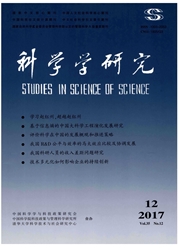

 中文摘要:
中文摘要:
比较分析美国"E.T.波尔曼事件"、韩国"黄禹锡事件"及中国"陈进事件"等科研不端行为典型案件的查处程序表明,已构建健全科研不端行为防范体制和机制的美国,有着正确、及时、秘密的查处程序,并能发挥其应有的公平、公正与效率作用;急功近利而无相关法律规制的韩国,也能正确、及时和有效地查处黄禹锡事件,并积极建立相关防范体制;面对类似突发事件的中国,虽有立法不足、体制不全、程序公正性和效用性欠缺等问题,却也积极推动了相关制度建设。
 英文摘要:
英文摘要:
Through a comparative analysis on their procedures of investigating and dealing with research misconduct,based on some typical cases as the Poehlman case,the Woo Suk Hwang case,the Chenjin case in the United States,South Korea and China,it showed: because a sound system and mechanism preventing research misconduct having been set up,the United States not only had a correct,timely and secret procedure of investigation and disposal,but also could play an important role about fair,just and utility of procedure;although no laws and regulations preventing research misconduct,the utilitarian South Korea could either correctly,timely and effectively investigate and deal with the Woo Suk Hwang case,or actively establish a correlative prevent systems;faced with similar incident,China appeared some shortcomings of legislation,system and procedure dealing with research misconduct,but it actively promoted the correlative system construction.
 同期刊论文项目
同期刊论文项目
 同项目期刊论文
同项目期刊论文
 期刊信息
期刊信息
